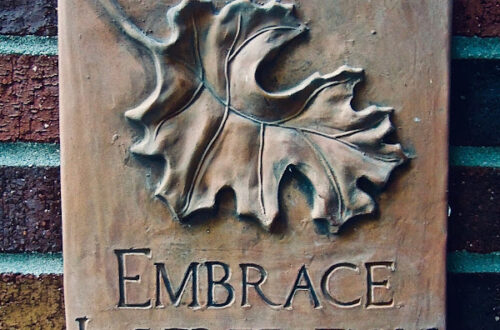
The art and science of healing: Notes from my quarantine journal
“It is our wounds that create in us a desire to reach for miracles. The fulfillment of such miracles depends on whether we let our wounds pull us down or lift us up towards our dreams.” ~Jocelyn Soriano, Mend My Broken Heart
Healing. I’ve been obsessed with the word ever since the pandemic began. With so much extra time on my hands, I’ve recounted the details of nearly every major illness and every surgery that’s left me with scars on various parts of my face and body, including two hip replacements and a series of Mohs surgeries for skin cancer.
Likewise, I’ve recalled the list of family members and friends who’ve slashed my pride or bruised my heart — as well as the damages I’ve inflicted in return.
The science of wound healing has always fascinated me. I’ve nearly memorized the various stages of skin repair, thanks to an educational handout I’ve kept as a souvenir from the skin cancer surgeon I’ve seen more times than I can count on one hand over the past 10 years.
The first phase is hemostasis, when blood vessels constrict to facilitate clotting and closure of the wound. Next comes the inflammatory phase, during which the wound swells and turns red. Typically the most painful — because it follows the initial shock of the wound or incision — this process controls excessive bleeding while it prevents infection. The fluid rushing to the wound encourages repair cells to move to the site and begin the delicate process of mending.
The proliferative phase (also known as the granulation phase) begins as soon as the wound is rebuilt with new tissue. At this point, a fresh network of blood vessels must be fashioned so that the granulation tissue can receive the oxygen and nutrients it needs to thrive.
The final stage, aptly called maturation, is the remodeling stage. This is when the wound finally closes. The cells that were used to repair the injury are no longer needed, and are programmed to die. This final stage begins around three weeks after an injury — and can continue for a year or more.
As my surgeon reminded me after a brutal session of plastic surgery for a deep basal cell skin cancer on my cheek, “maturation” requires patience, as well as acceptance of the fact that things will not improve overnight. (“Usually the incision looks worse before it gets better,” he told me as he stitched my numbed face.) I was several shades of black and blue for weeks — but years later, I can barely see the shadow of a two-inch scar.
The whole process is a carefully timed cellular dance, and nothing less than a miracle.
Emotional wounds and healing
Naturally, the stages of physical wound repair can be read as a metaphor for emotional healing.
When someone deeply disappoints you or betrays your trust, emotional healing requires your patience — as well as unflinching, courageous self-examination.
It might seem easier to patch the injury with denial; to brush it off or pretend that it never happened. But you don’t need a therapist to tell you that unresolved emotional conflict will forever haunt the troubled relationship. To recover, you must go through the phases of healing. You must consider what is causing the pain and assess the extent of the damage. As Marcel Proust wrote, “We are healed of suffering only by experiencing it to the full.”
Those of us who are emotionally sensitive are often told to develop “a thicker skin” and to stop taking things personally. We’d be hurt less often if we didn’t feel things so deeply. That said, a favorite creative writing teacher once told me that anyone who criticizes me for being too sensitive is negating the essence of who I am.
Once we heal our own wounds, we’re better equipped to serve others who can learn from our experience.
If we pay close attention, after all, our scars contain a message, a lesson. They might remind us that we need to take better care of ourselves, whether that means protecting our skin from a sun burn or bolstering our courage to face relatives or coworkers who continually abuse us.
Sometimes healing and reconciliation seem impossible, especially when others don’t acknowledge or even realize what they’ve done to inflict pain. When that happens, we have to move through the maturation process on our own.
American battle scars
I’m thinking of our country right now, and how the Inauguration of President Biden sparked a glimmer of hope for national healing after four sad years of anger, misunderstanding, and division. That hope was short-lived.
It still feels as though my fellow Americans — Democrats and Republicans — are speaking two different languages and can’t communicate any more. If we won’t even agree on certain fundamental truths, our relationships will be strained, at best, or combative, at worst. Equally hurtful are the friends, neighbors, and relatives who remain quietly complicit, refusing to admit the lies or own the basic facts. Meanwhile, the wounds fester, on both sides.
Our new president makes a great case for unity, but at this point in time, his words seem lost on those who keep fanning the hot coals of partisan anger and stupefying conspiracy theories. Protecting ourselves from the chaos, we retreat to the comfort and safety of friends who speak and understand our truth.
Optimism flows in my veins, usually, but it’s running thin these days. I wish I could say I wasn’t worried about the way things are going. This morning, while writing this piece, I ran across a thought-provoking quote on healing from Robert Brault: “Life becomes easier when you learn to accept an apology you never got.” I’m thinking this might be where things stand, at least right now.
But it still hurts. The first phase of healing has barely started. ~Cindy La Ferle


